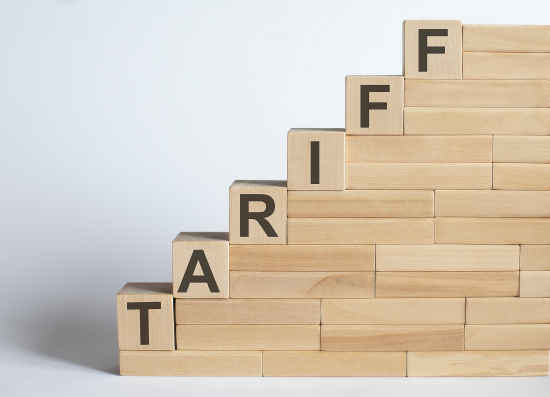When President-elect Donald Trump recently proposed new 25% tariffs on imports from Canada and Mexico, the housing and real estate sectors braced for potential ripple effects.
For a market as dynamic and unique as Miami, the implications could be profound. From luxury developments to affordable housing, the tariffs threaten to reshape Miami's real estate landscape in ways buyers, sellers, investors, and developers need to understand.
What’s Driving These Tariffs?
President-elect Trump’s proposed tariffs aim to protect domestic industries by imposing taxes on imported goods, including Canadian lumber and Mexican steel and aluminum. While the idea is to boost U.S. production, these materials are vital for construction projects in Miami, where high-rise condos, luxury developments, and large-scale housing projects dominate the skyline.
For Miami, where much of the housing market relies on cost-efficient construction and international investment, these tariffs could create significant challenges.
The Miami-Specific Impacts of Tariffs
These tariffs don’t just mean added costs—they could spark a chain reaction impacting everything from construction timelines to housing affordability.
Whether you’re a developer, investor, buyer, or renter, it’s important to understand how these changes might affect Miami’s dynamic real estate landscape. Let’s break down the potential impacts, one layer at a time.
 Skyrocketing Construction Costs
Skyrocketing Construction Costs
Miami’s real estate market thrives on new construction, from luxury high-rises in Brickell to affordable housing in Little Havana. The city’s dependence on imported materials, especially Canadian lumber and Mexican steel, means the proposed tariffs could lead to higher construction costs.
Luxury Properties
Developers of high-end condos may face rising expenses, which they’ll likely pass on to buyers. This could shrink demand, particularly from international clients who are already balancing currency exchange rates and market uncertainties.
Affordable Housing
Miami faces a critical need for affordable housing. Higher material costs could delay or halt projects aimed at providing relief to lower-income residents, exacerbating the city’s housing affordability crisis.
Reduced New Construction Activity
With higher material prices and tighter margins, some developers may delay or scale back projects. For Miami’s competitive market, this could mean fewer new units hitting the market, leading to a tighter inventory and higher property prices across the board.
Developers of smaller or mid-sized projects, who typically operate on thinner profit margins, are especially vulnerable to these cost increases.
Luxury developments, while profitable, may see delays as developers reassess budgets or negotiate new supplier agreements.
Increased Rental Demand and Higher Rents
As homeownership becomes less affordable due to rising prices, more Miami residents may turn to renting. Increased demand for rental properties could drive up rents, further straining Miami’s already tight rental market.
Landlords in hot neighborhoods might benefit from rising rents, but tenants could face steeper monthly costs, adding to Miami’s affordability challenges.
Supply Chain Bottlenecks
Tariffs don’t just increase costs—they can also disrupt supply chains.
Miami’s reliance on imported goods means that any delays at ports or customs checkpoints could slow construction timelines. For developers working on luxury towers with tight completion schedules, even minor delays could mean significant financial losses.
Developers may need to source alternative materials locally or shift project timelines, both of which add complexity to Miami’s fast-moving market.
Impact on International Buyers
Miami’s real estate market is heavily influenced by foreign buyers, particularly from Latin America. Rising construction costs and higher property prices could deter some international investors, pushing them toward other markets where they perceive better value. This could particularly affect Miami's high-end market, which has historically relied on foreign investment to thrive.
Long-Term Implications for Miami’s Market
While the immediate effects of these tariffs could be challenging, the long-term outlook depends on how the market adapts. Domestic producers of lumber and steel may eventually ramp up supply, stabilizing prices—but this could take years. In the meantime, Miami’s real estate market may experience increased pressure on affordability and inventory.
The luxury market, a cornerstone of Miami real estate, might also shift. Developers could turn to more cost-effective designs or smaller-scale projects to accommodate higher material costs.
What Can Miami Buyers, Sellers, and Investors Do?
Navigating these potential changes requires strategic planning. Here’s how you can stay ahead:
Buyers
If you’re looking to buy in Miami, act quickly. Rising construction costs could push property prices higher in the coming months.
Sellers
Limited inventory could work in your favor. If you’ve been considering selling, this may be a great time to list, especially in high-demand neighborhoods.
Investors
Pay close attention to rental trends. Rising rents could create opportunities in multifamily properties, but watch for shifts in tenant demand as affordability tightens.
Developers
Diversify your supply chains and explore alternative building methods to manage costs. Partnering with local suppliers or exploring modular construction could provide long-term solutions.
TIP: If you’re in the middle of a construction project or planning one soon, now is the time to act. With the possibility of 2025 tariffs driving up material costs by as much as 25%, securing your lumber, steel, and other essential supplies now could save you a significant amount of money. Think about it—buying materials ahead of potential price hikes means locking in today’s prices, avoiding the added costs that tariffs might bring.
Why Miami Stands Apart
Despite these challenges, Miami’s real estate market remains resilient. Its international appeal, booming population, and status as a hub for commerce and culture mean demand for property is unlikely to wane entirely. While the proposed tariffs could create short-term turbulence, savvy buyers, sellers, and investors who understand the market dynamics can still find opportunities to thrive.
Navigate Miami’s Market with Confidence
The Miami real estate market is evolving rapidly, and staying informed is the key to making smart decisions. Whether you’re buying your South Miami dream home, selling a property in Kendall or investing in a Downtown Dadeland rental, I can guide you through the complexities of the real estate market.
Contact me today to discuss your real estate goals and develop a personalized strategy to navigate Miami’s dynamic market. Don’t wait—Miami’s opportunities are waiting for you!
Subscribe to Blog